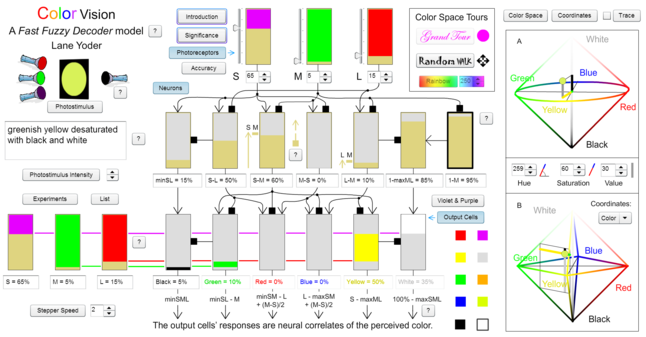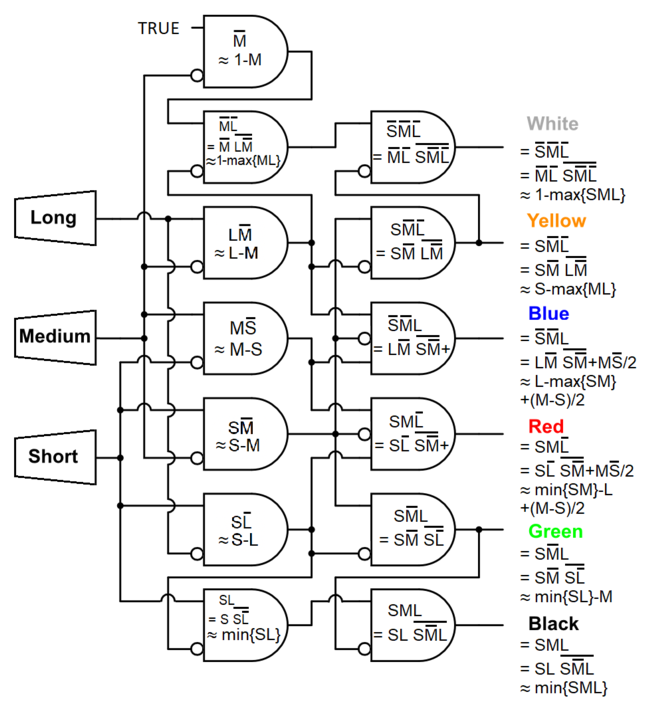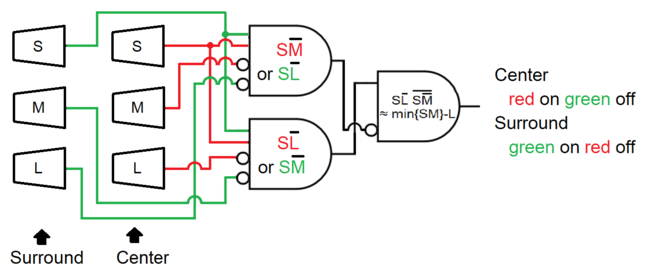DEEP Neural Networks
show how the brain is wired
Color Vision Model
Click here to open the animated, interactive model of color vision in a new window
Click here to open the animated, interactive model of color vision in the same window
Click here to open the animated, interactive model of color vision in the same window securely (https:// protocol)
The modified FFD model shows how photoreceptors and neurons can be connected to process color information. The model explains familiar color experiences, like color mixing and color space. There is no other explanation of even one color phenomenon.
Click here to open the Interactive FFD Model of Color Vision.
Adobe and the major browsers stopped supporting Flash Player at the end of 2020.
You can request a copy of the Flash executable .swf file that I created by clicking on Contact Us. To see what you will get, take a look at the Color Vision > Videos on YouTube.
The file requires a Flash Player, and the .swf file can simply be opened. If you don't already have this, it can still be obtained. There are many players available, and I highly recommend Ruffle. I used it to make the Rainbow tour, the most recent YouTube video. It's very easy to download and to use. See here for other suggestions. If you have any problems, let me know.
Here are several depictions of the model.

Fig 4 in Related Article #2. A possible three-dimensional configuration of the fuzzy decoder model of color vision in the retina. The gray circles represent inhibitory neurons.

Fig 7 in Related Article #8. This is how the fuzzy decoder model appears in the Color Vision > Videos.

Fig 6 in Related Article #8. The fuzzy decoder model in standard logic circuit form.

Figure 3 in Related Article #9. The color networks from the figure above are separated into their component parts.
.png)
Figure 4 in Related Article #9. Center-surround receptive fields for on-off spatial contrast.

Fig 6 in Related Article #9. A double-opponent cell that is center red on green off and surround green on red off. The output cell has a strong response to red fruit surrounded by green foliage.